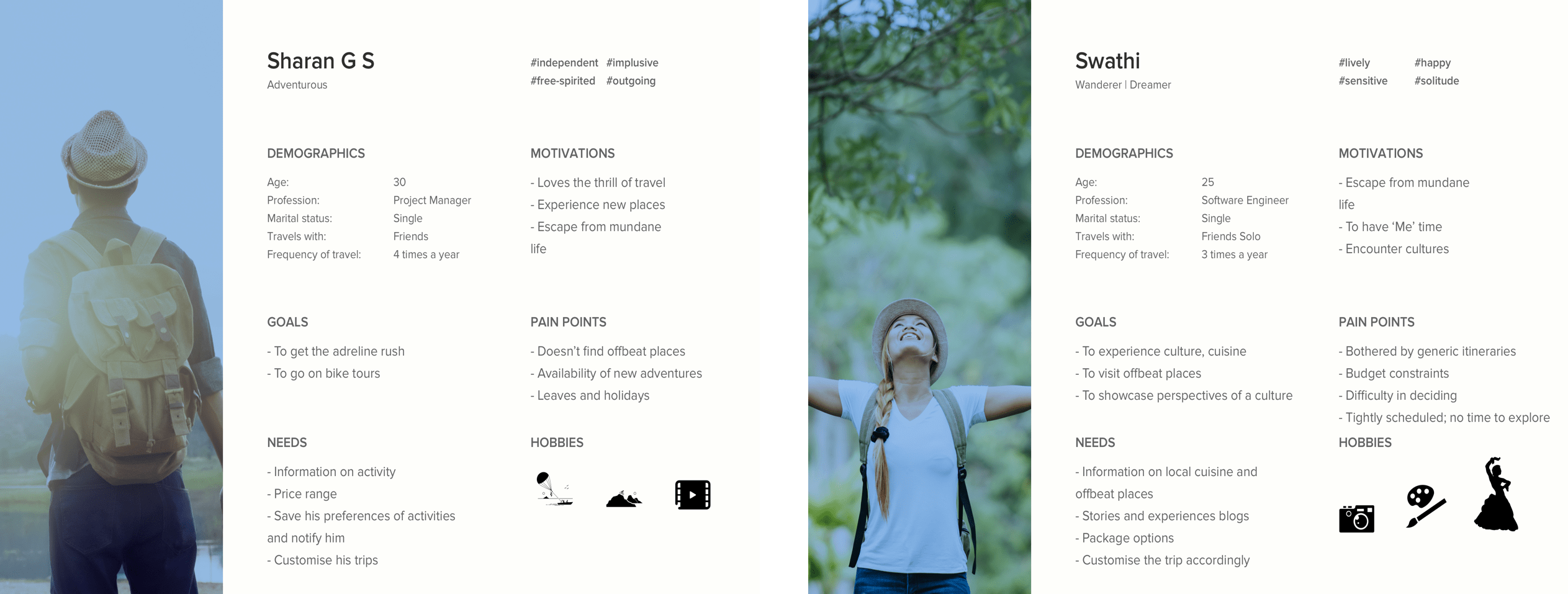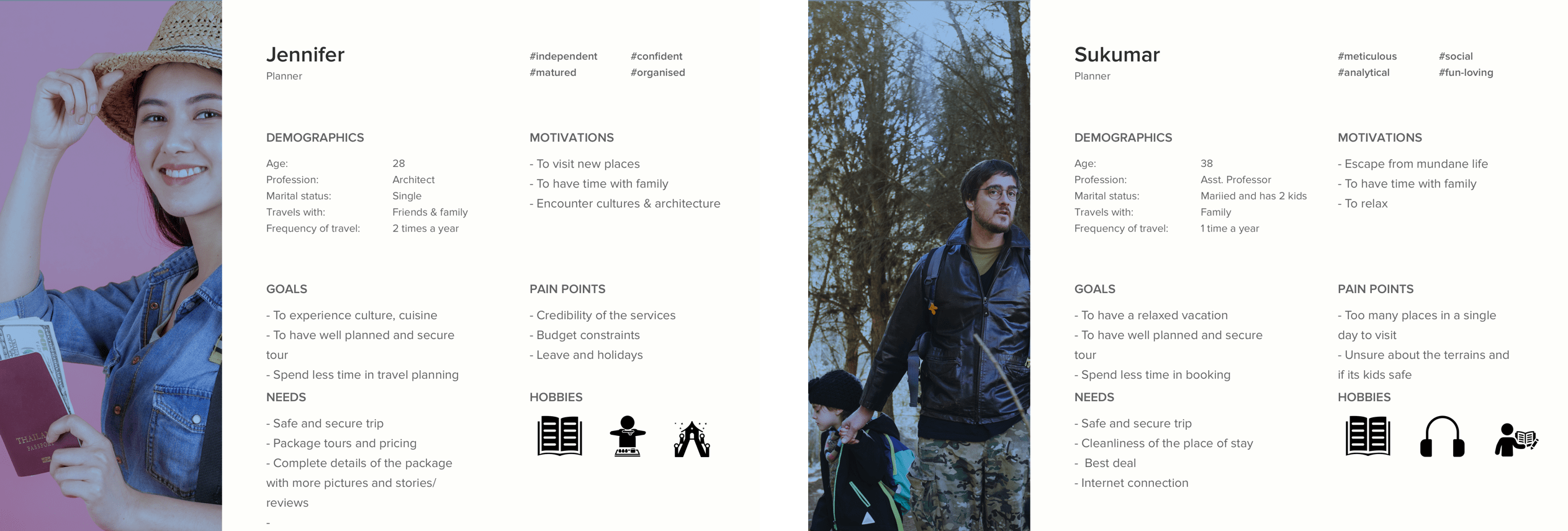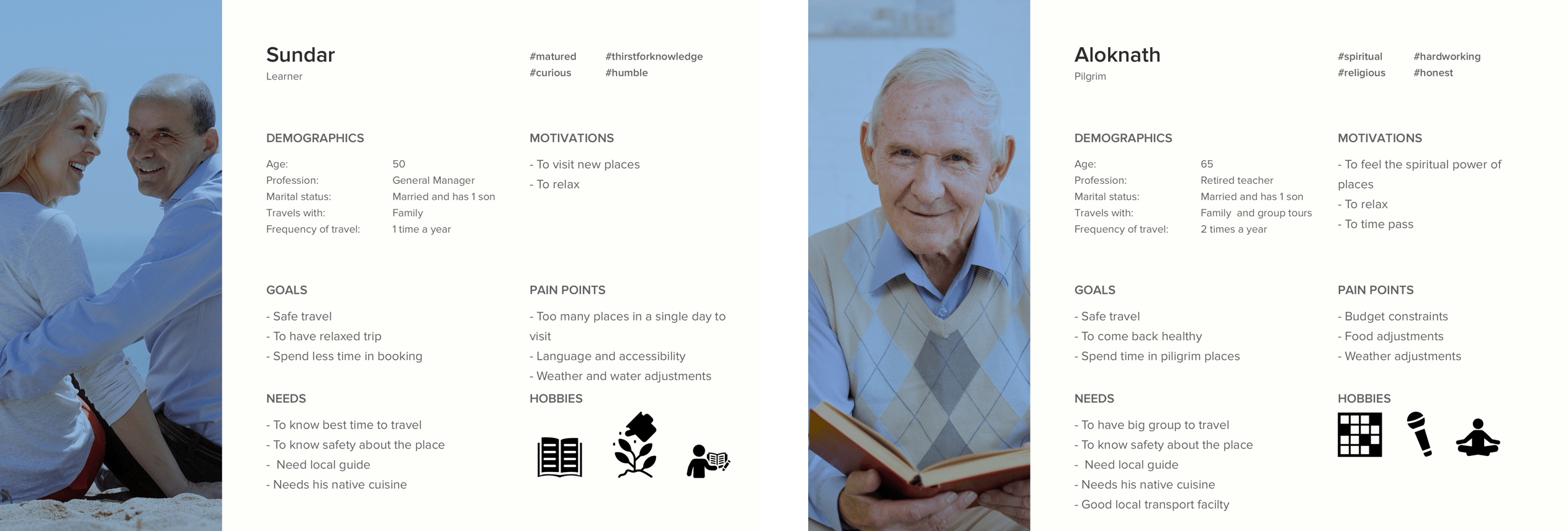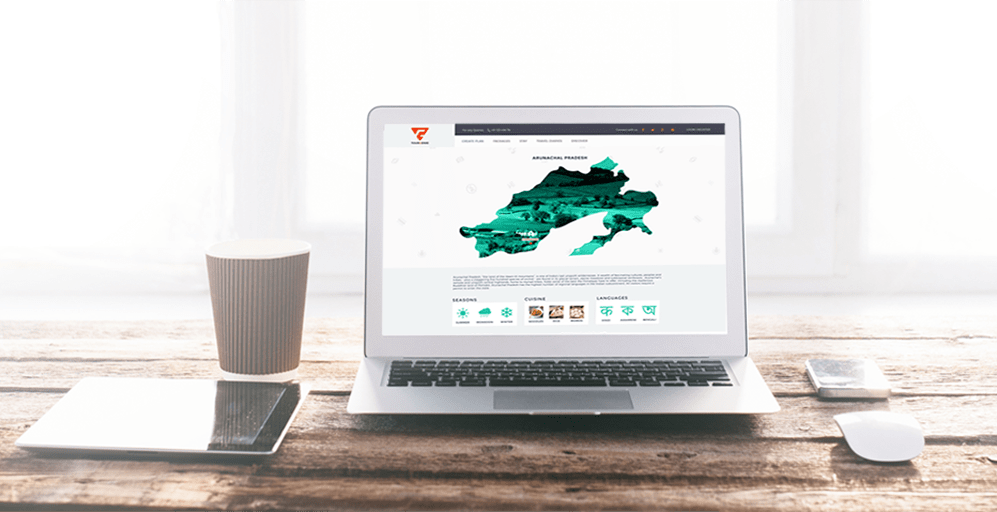
Client : Tour Genie
Company: Pink Lemonade Creative Ad. Agency
Team: 2 UX Designers, 1 Content Writer, 1 Developer and 1 Client Servicing person
Duration: 4 Months
My Role:
- Conducting quantitative research by sending out survey forms and qualitative research by being a observer in the focus group interview
- Defining persona and drawing out user journey based on user cases and scenarios
- Conducted card sorting activity with potential users along with another designer and finalised a site map for the website
Problem Statement
“How to enable travellers, have a safe, secure and relaxing trip and also experience nativity, culture, serenity and activities in North-East India, Nepal & Bhutan by giving them a customized, tailor-made travel options?”
- Myself along with another UX designer, divided the flows and developed high fidelity interactive wireframes using Axure
- Establishing visual language and design the UI for the website with the help of a senior
- Coordinating with the front-end team to execute prototyping of website.
Process
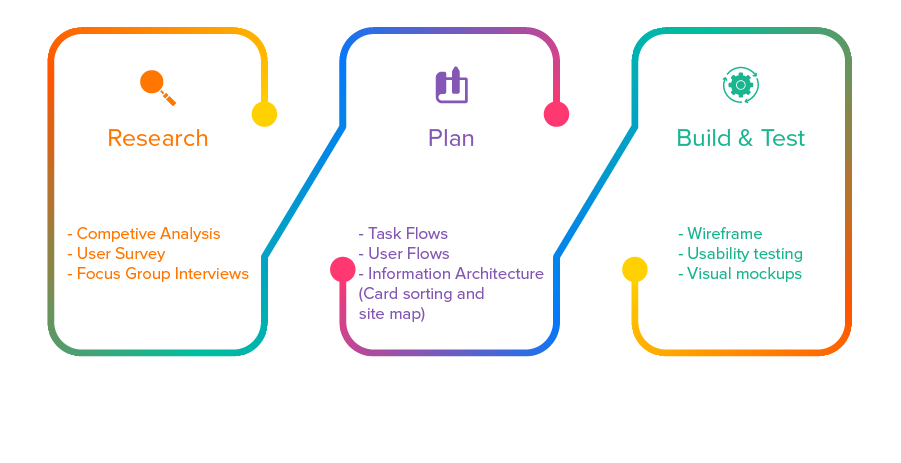
Research - Competitive Analysis
In order to understand what market domain, competitive analysis was conducted in terms of marketing strategy, core business, content, design and performance.
Advantages and disadvantages of Make my Trip with respect to usability factors — learnability, mapping, memorability and consistency was analysed.
These factors helped us to assess current offers in the domain.
Competitors:
Make my Trip
Inspirock
Thrillphillia
We are Holidays
SWOT analysis of Tour Genie helped to understand where do we stand in the market and what are the opportunities that can be tapped.
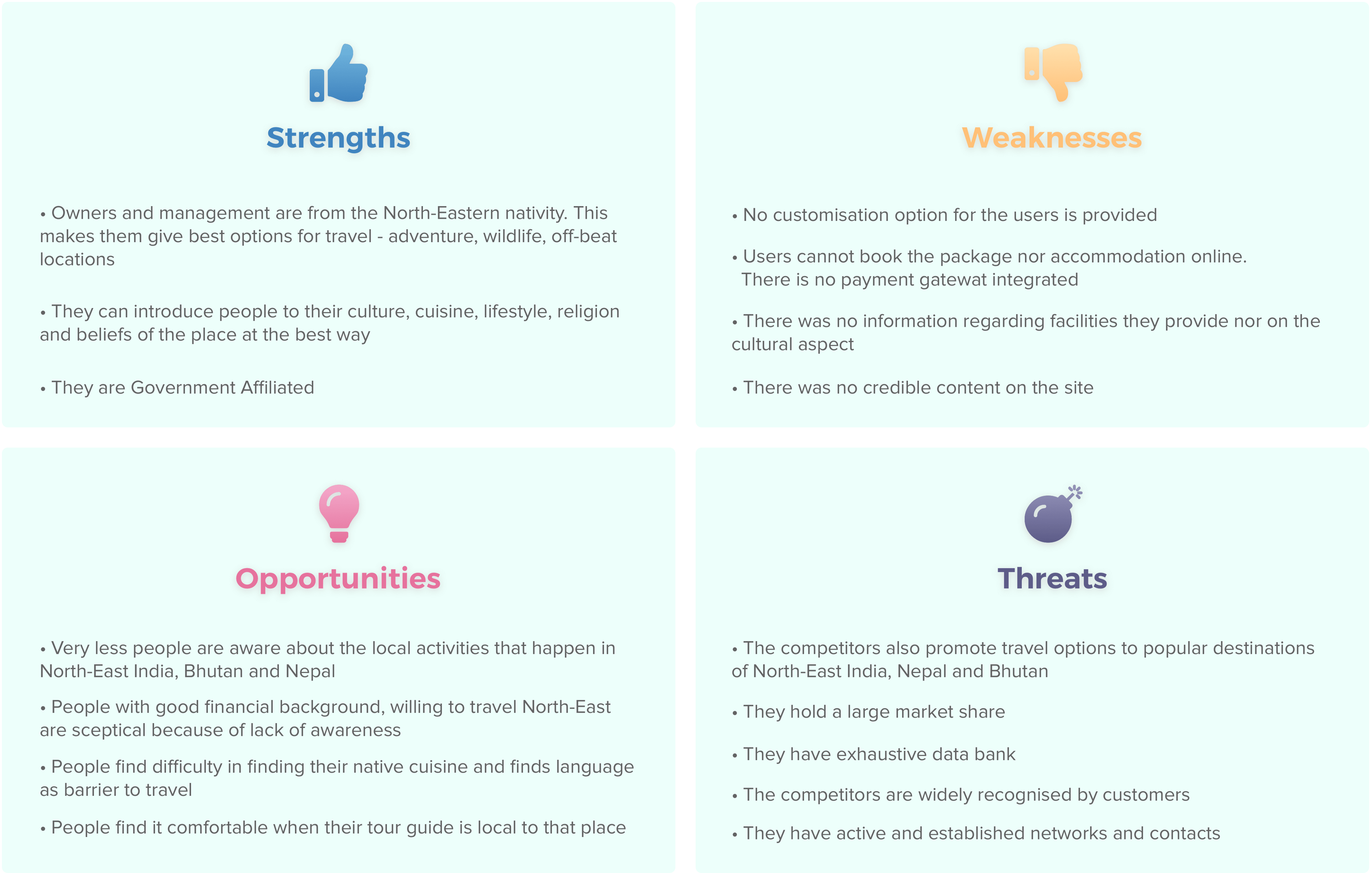
Research — User Research
Our primary users are millennials (male & female)
Age group: 28–40years
Economic status: Middle class to Upper class
In order to understand the user behaviour, pain-points and needs.
I conducted surveys and interviews. Our goal was to answer the below questions at the end of the research
Goals
What influences people to travel?
What are their preferences?
How do they plan their trips?
According to them what makes a memorable trip and what does not?
What is their view on North-East Part of India with respect to travelling?
User Research — Quantitative
A survey form (Google forms) was sent to users of all age group. 259 participants responded to the survey.
- 60% were below age of 40
- 41.7% travel once in 6 months and 27.2% once in a quarter
- 48.2% plan for more than a month
- 50.4% plan their holidays themselves and 31.1% book from online travel sites
- 40.9% compare the itieraries before booking
- 54.5% have not travelled to North-East
- 48.5% people mentioned lack of information as a reason for not travelling North East
- 64% people travel to North-East for scenic beauty and 34% to experience new culture
After observing the metrics, we formulated few hypotheses that could be validated in the qualitative research.
User Research — Qualitative
A focus group discussion was conducted with 8 participants.
These were the people who like to travel and usually travels once in 6months to once in every 4months.
Some Insights from the research were:
- Users choose packages depending on their interests and activities they would like to do
- Websites they trust — lonely planet, Airbnb, trip advisor.
- Mediums that inspire them— Facebook, Instagram
- Information they require — ways to get there, transportation facilities in that place, best time to visit, local language, places to visit, places to eat and shop, things to do there and even rules and regulations of that place
- Most of them hadn’t visited North-East India and some had visited the popular destinations there. Though most of them expressed their wish to explore places there, they mentioned they didn’t have enough information and had come across very few trip experiences, festivals or any documented trails on social media. They have very rarely or never seen any photographs on different activities that can be done there. They also expressed their concern towards hygiene, cleanliness, type of food and safety during the trip.
Personas
Pain-points
- Lack of holistic and contextual information about the North East and activities in North East
- Lack of customisation options while planning a trip
- Unfamiliarity with the local language becomes a communication barrier
- Increased search-time that involves checking multiple sites makes it stressful, as it becomes difficult to decide
- Budget constraints and distance are the main problem
- Difficulty in finding offbeat destinations in North East
Needs
- More information, helps make the travel decisions easily
- Options to customize, provides a personal touch to their travel
- Involve friends & family in travel discussions and decisions
- Cost information, helps them plan the trip efficiently
- Expert Advice, helps them get advice immediately about the place they wish to travel
- Credible content, backed by expert opinion and other travellers opinion
Plan — Proposed Features
Features were gathered from the insights gained from user research. From Kano Model, these features were segregated into attributes — basic, performance and delight.
- Creating and customising their own plan
- Interactive maps
- Inviting the friends and family during customisation and view plans
- Notifying or informing users on events
- User generated content
- Seasoned packages
Plan — Task flow
In order to visualize the individual steps that a user makes during the course and its possibilities, I have created a corresponding task flow.
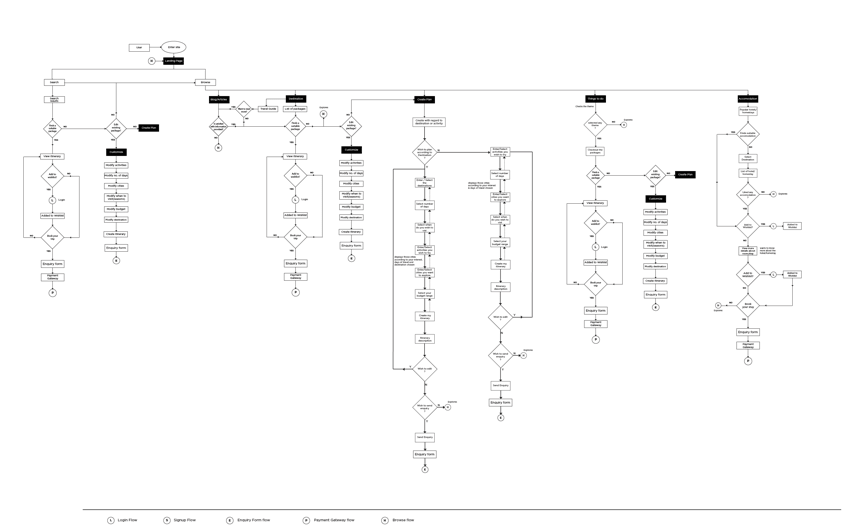
Plan — User flow
We traced the paths user will follow through the website to accomplish a task. This helped us to analyse and show only relevant information in the screen. This was also an input for designing the site map.
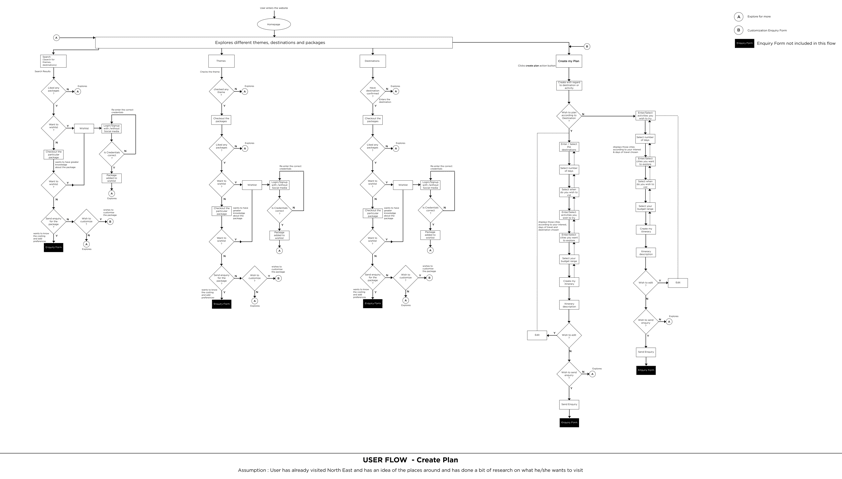
Plan — Information Architecture
In order to understand mental models of users of finding the information, I conducted a card sorting technique in the office premises
Card Sorting & Site map
I curated a list of tasks which could be given to the participants and observe where they would likely to find the solution for the same. A closed card sorting technique was conducted with 5 participants.
Based on the insights drawn from the competitor analyses and card sorting, I defined the sitemap for website.
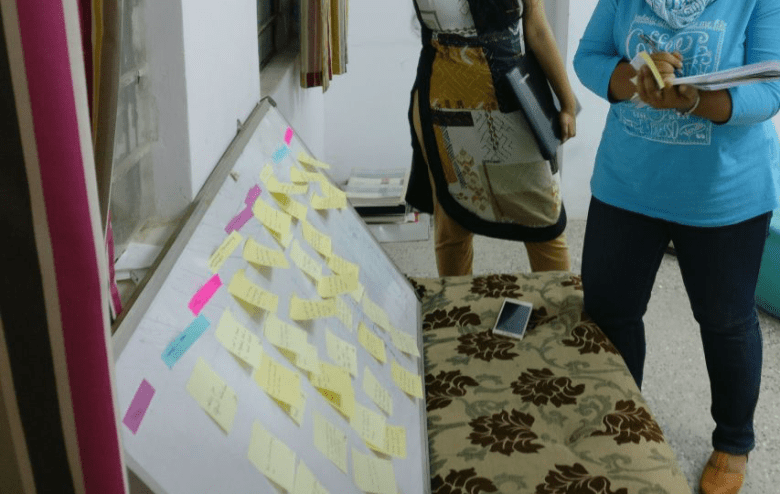
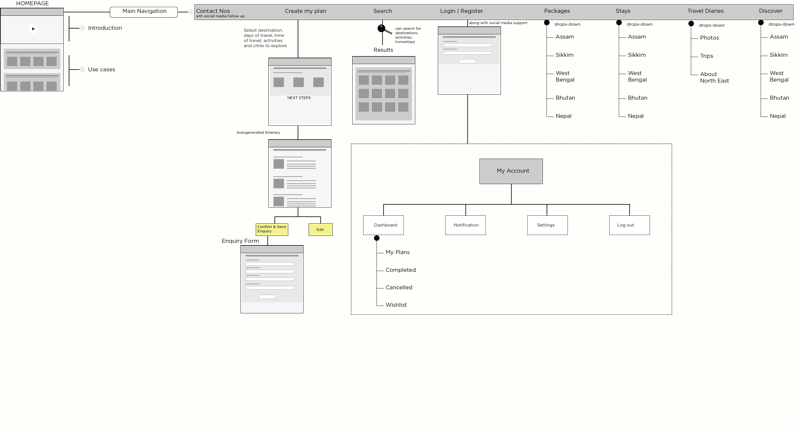
Build & Test — Wireframes & Usability Testing
Interactive wireframes were created in Axure. These wireframes was tested with the potential users. The feedback was incorporated into the wireframes.
Number of participants: 3
Tasks:
1. Walk around the website
2. Create your own plan
3. Book an existing package
After observing the users use the website and noting the feedback given, the design was iterated.
One of the iteration is shown below:
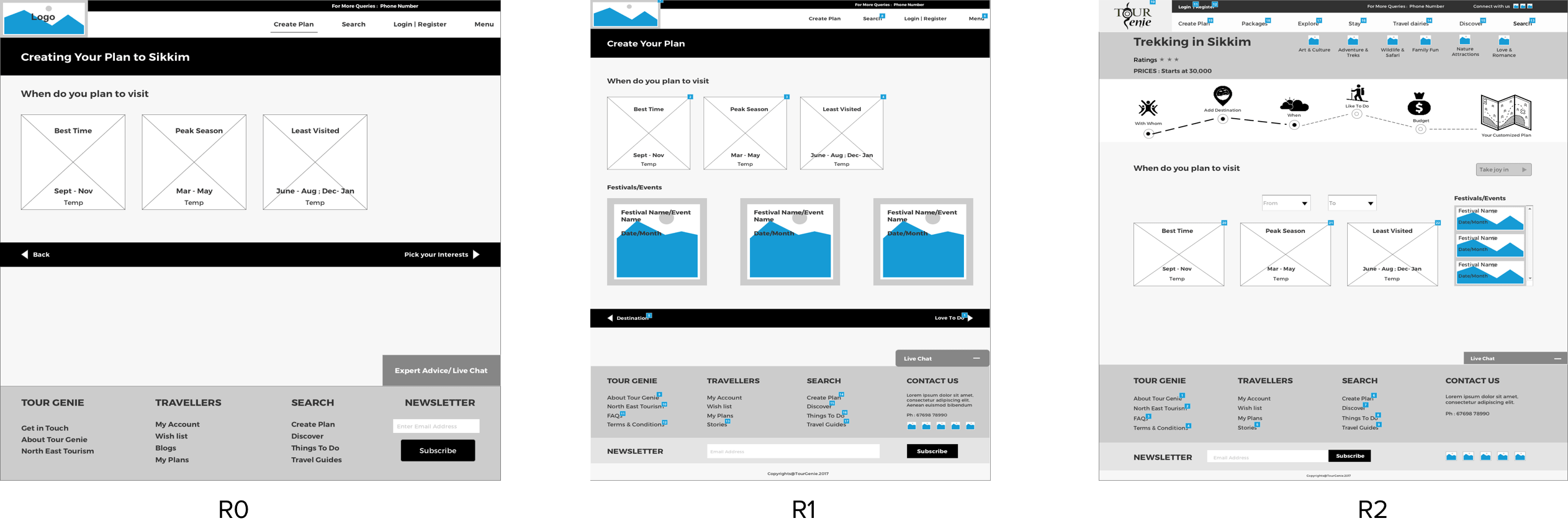
Build & Test — Journey from Wireframes to Visual Design
The visual design was developed once the wireframes were agreed on with clients.
Evolution of the wireframes into visual design
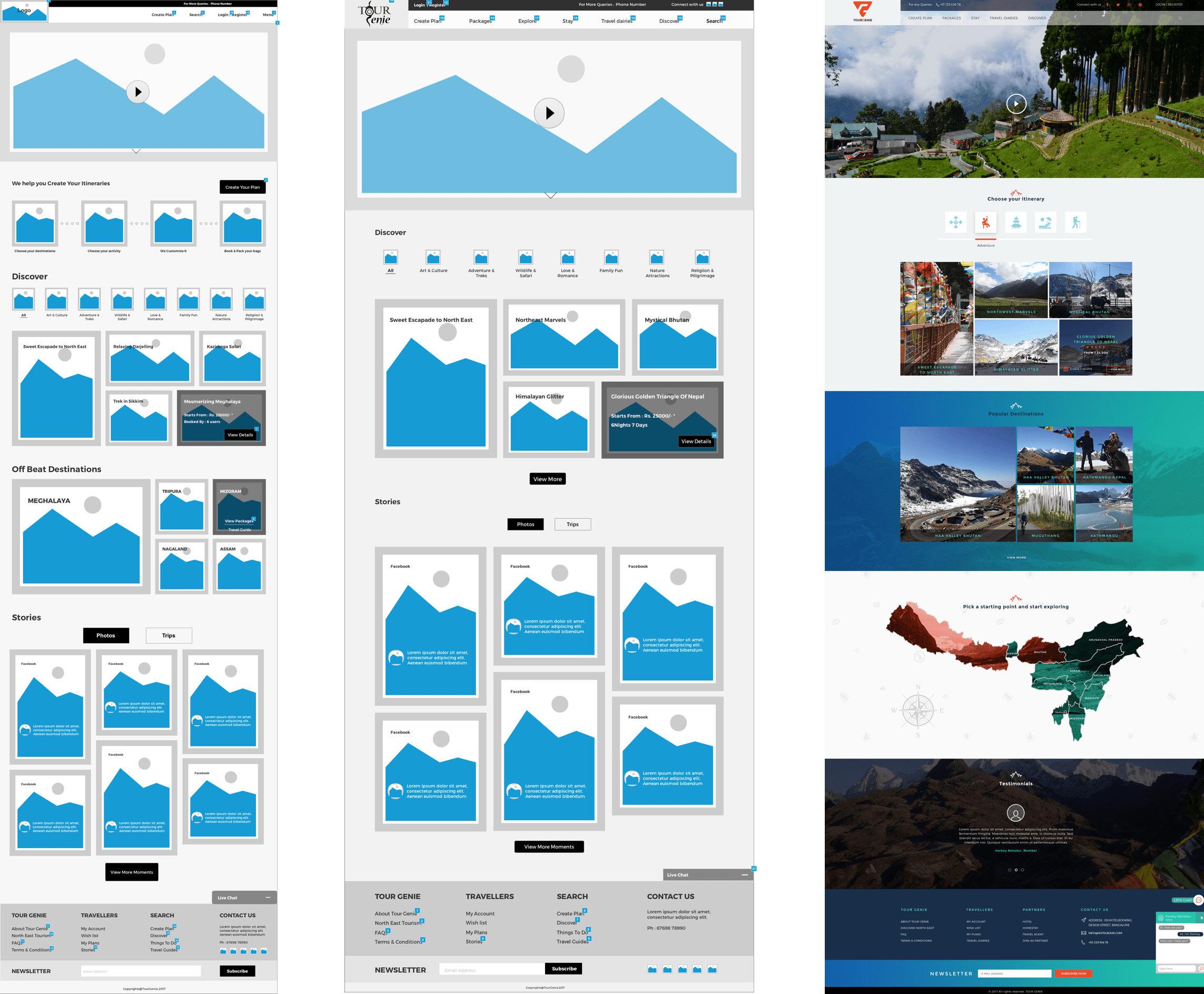
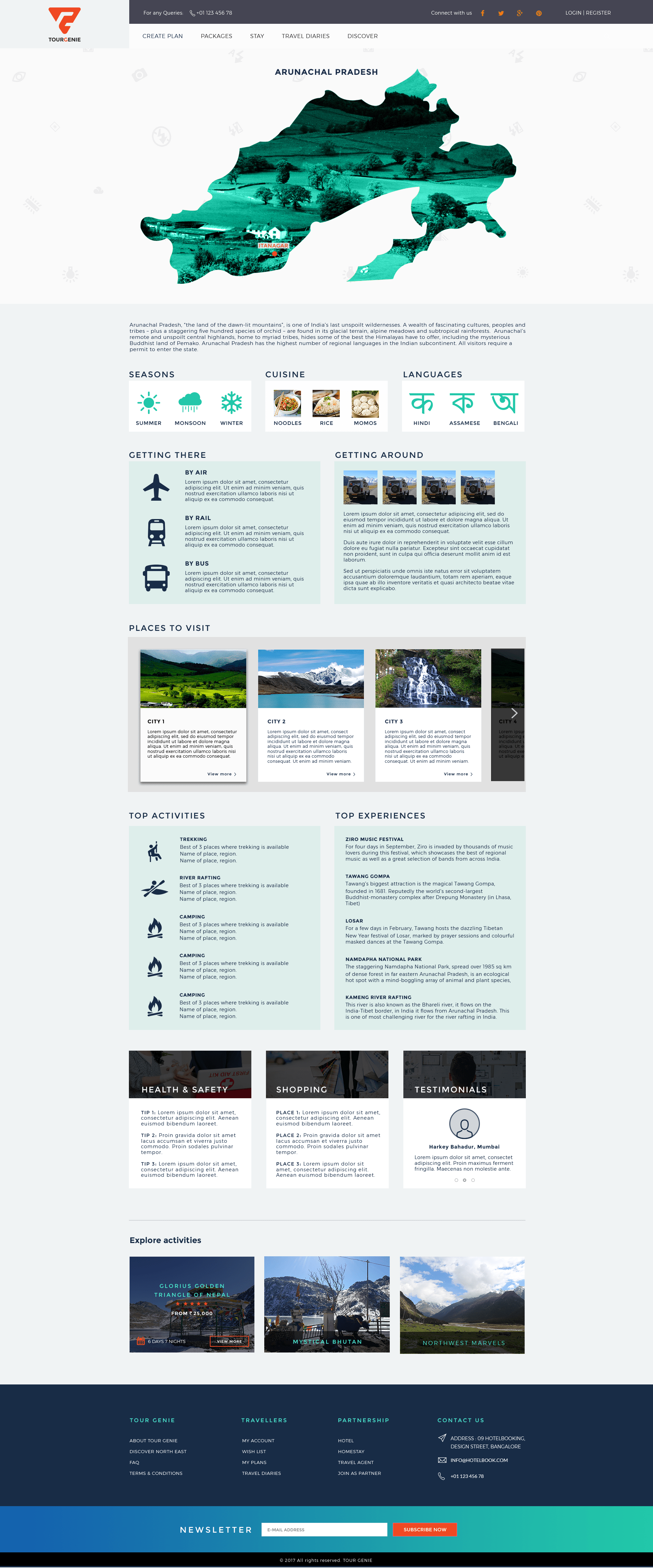
Conclusion
The project was completed in 4 months and it is phased out as per client’s requirements. The development is taken care by the client side.
Concepts like create plan and interactive map are yet to be implemented.
The reviews are going great for the company so far and has increased the customer inflow. However, if analytics are analysed and conduct further usability tests, the user experience of the site can be enhanced.
Though travel websites do depend on the service provided by the travel agents, showcasing the good work on internet helps them increase sales and expand in scale.
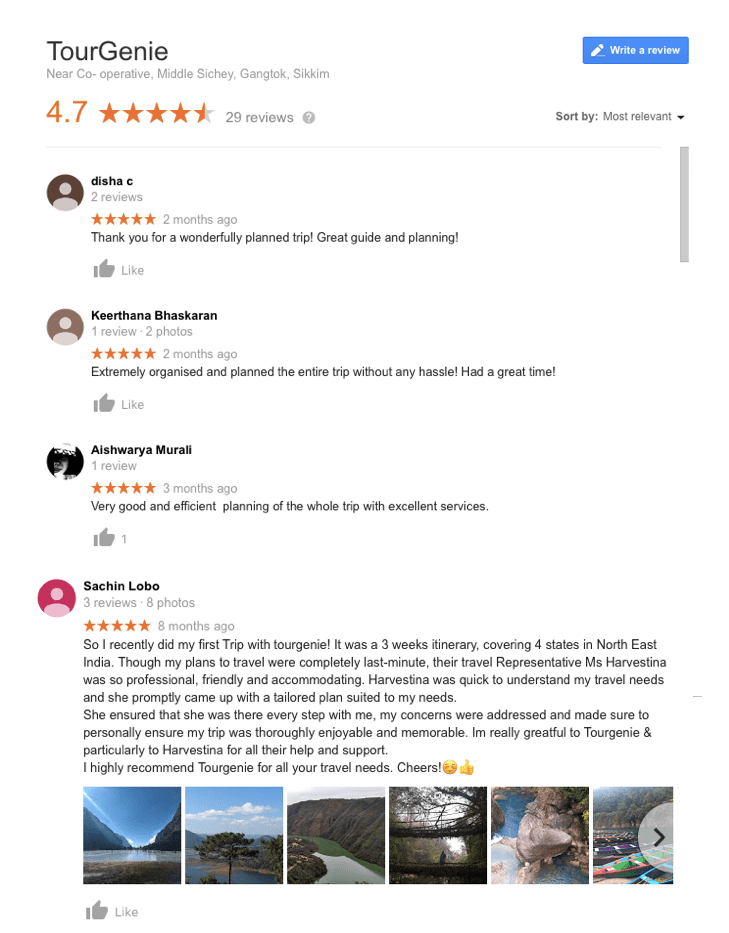
If there was more time….
- Some more concepts could be suggested like:
- Interactive maps would helps users to plan their itinerary. It would show places close by, and allow users to add them onto their itinerary.
- Interactions like dragging and dropping for the day plans inter changeability could be incorporated too. - User flows for different scenarios could be developed along with customer journey mappings
- Usability testing could be conducted on field as well
- A/B tests could be conducted
Next Project
Edge Verve
This intranet portal was designed for Infosys - Edge Verve, Bangalore. Edge Verve portal was initially used by the employees during their fest. But, the challenge was how to engage them throughout.
